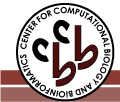| General information | | DisProt: | DP00186 | | Name: | Late embryogenesis abundant protein 1 | | Synonym(s): | LEA1_APHAV
AavLea1
| | First appeared in release: | Release 3.0 (02/17/2006) | | UniProt: | Q95V77 | | UniGene: | | | SwissProt: | LEA1_APHAV | | TrEMBL: | | | NCBI (GI): | 24418520 | | Source organism: | Aphelenchus avenae (Mycophagous nematode worm) | | Sequence length: | 143 | | Percent disordered: | 100% | | Homologues: | |
| Native sequence |
10 20 30 40 50 60
| | | | | |
MSSQQNQNRQ GEQQEQGYME AAKEKVVNAW ESTKETLSST AQAAAEKTAE FRDSAGETIR - 60
DLTGQAQEKG QEFKERAGEK AEETKQRAGE KMDETKQRAG EMRENAGQKM EEYKQQGKGK - 120
AEELRDTAAE KLHQAGEKVK GRD
|
| Functional narrative |
"LEA proteins were first identified 20 years ago in cotton and
wheat and are produced in abundance during seed
development, comprising up to 4% of cellular protein. Since
then, up to five different groups of LEA proteins have been
defined on the basis of expression pattern and sequence. Precise functions of the LEA proteins have yet to be elucidated,
but expression is linked to water stress and the acquisition
of desiccation tolerance in orthodox seeds, pollen, and
anhydrobiotic plants. They have been variously
proposed to protect cellular structures from the effects of water
loss by action as a hydration buffer, by sequestration of ions, by
direct protection of other proteins or membranes, or by renaturation
of unfolded proteins, although supporting evidence is
limited.... Genome
sequencing projects have brought to light sequences related
to Group 3 LEA proteins in the nematode Caenorhabditis
elegans and also in the prokaryotes Haemophilus influenzae
and Deinococcus radiodurans, indicating that this type of
LEA protein at least is not restricted to plant species.... The function of non-plant LEA proteins
may also relate to water stress...." (Goyal et al. 2003)
|
| Map of ordered and disordered regions |


Note: 'Mouse' over a region to see the start and stop residues. Click on a region to see detailed information.
|
| Region 1 | | Type: | Disordered | | Name: | | | Location: | 1 - 143 | | Length: | 143 | | Region sequence: |
MSSQQNQNRQGEQQEQGYMEAAKEKVVNAWESTKETLSSTAQAAAEKTAEFRDSAGETIR
DLTGQAQEKGQEFKERAGEKAEETKQRAGEKMDETKQRAGEMRENAGQKMEEYKQQGKGK
AEELRDTAAEKLHQAGEKVKGRD | | Modification type: | Native
| | PDB: | | | Structural/functional type: | Function arises from the disordered state
| | Functional classes: | Entropic chain
| | Functional subclasses: | Molecular shield
| Detection methods:
- Circular dichroism (CD) spectroscopy, far-UV (pH: 7; 0.1 and 2 mg/ml of AavLEA1 in 50 mM phosphate buffer; 0.1-cm path length)
- Fluorescence polarization/anisotropy (0.1 and 0.5 mg/ml AavLEA1; Excitation wavelength of 280 nm; Scan rate of 60 nm/min; Slit widths of 2.5 nm)
- Fourier transform infrared spectroscopy (FTIR), aka infrared spectroscopy) (298 K; Protein (15 mg/ml))
| References:
- Chakrabortee S, Tripathi R, Watson M, Schierle GS, Kurniawan DP, Kaminski CF, Wise MJ, Tunnacliffe A. "Intrinsically disordered proteins as molecular shields." Mol Biosyst. 2011; 8(1): 210-9. PubMed: 21909508
- Goyal K, Tisi L, Basran A, Browne J, Burnell A, Zurdo J, Tunnacliffe A. "Transition from natively unfolded to folded state induced by desiccation in an anhydrobiotic nematode protein." J Biol Chem. 2003; 278(15): 12977-84. PubMed: 12569097
| Comments:Chakrabortee et al (2012) discuss a possible new functional subclass for LEA proteins, that of "molecular shield."
Molecular shield: entropic chain that forms a physical barrier around a target protein thereby reducing interactions that lead to aggregation, i.e. dessication tolerance provided by LEA proteins.
|
| References |
- Chakrabortee S, Tripathi R, Watson M, Schierle GS, Kurniawan DP, Kaminski CF, Wise MJ, Tunnacliffe A. "Intrinsically disordered proteins as molecular shields." Mol Biosyst. 2011; 8(1): 210-9. PubMed: 21909508
- Wise MJ, Tunnacliffe A. "POPP the question: what do LEA proteins do?" Trends Plant Sci. 2004; 9(1): 13-7. PubMed: 14729214
|
| If you have any comments or wish to provide additional references to this protein or its disordered region(s), please click here to e-mail us. |
Disprot-footer
|










